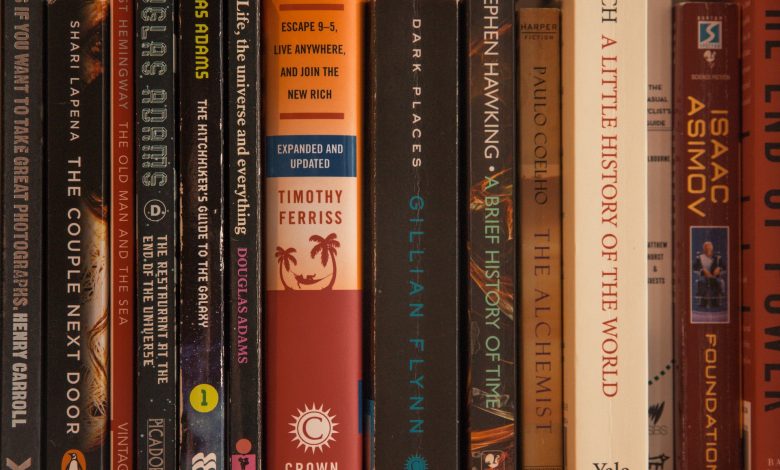The Best American Educational Publishers

How much time does it take to write a book? The answer depends on whom you ask. Some authors say they spend months or even years writing their books, while others claim they can knock out a manuscript in days.
Writing a book isn’t always easy. There are plenty of obstacles along the way, from finding the perfect topic to figuring out how to structure your ideas into a compelling narrative.
Writing a book takes time. So if you want to publish a book, you should start thinking about it now. To get started, you’ll need to decide what kind of book you want to write and then figure out how to go about it.
The Best American educational publishers
If you’re considering publishing a book, there’s no better place to start than with American educational publishers. You’ve probably heard that these companies often lend out their imprints for free to aspiring authors, but did you know that they also offer affordable self-publishing services? That means that you don’t have to pay an arm and a leg to find an agent or publisher—you can work through one of these companies.
What is an educational publisher?
Educational publishers specialize in written material designed to teach people something new. They make up part of the broader publishing industry—which includes everything from magazines to textbooks to children’s books—but because education is such a large market, it has its niche within publishing.
How do I choose an educational publisher?
When choosing an educational publisher, think first about what you’d like to learn. For example, do you want to read more about a particular subject? Or would you rather share your knowledge with other people? Then, once you’ve figured this out, look at the different formats available to you:
Books: This is probably the most traditional form of educational content, as it’s meant to be used by students. Books can range from high school level up to college courses.
Magazines: These typically contain articles about topics related to the field of study (e.g., health) or the organization itself (e.g., National Geographic). For example, if you wanted to learn about health trends, you could check out a magazine published by the American Medical Association.
Ebooks: Like ebooks, educational websites are digital versions of printed materials. However, unlike print materials, they don’t require any physical storage devices, making them easier to use.
Audiobooks: Audiobooks are just audio recordings of books. While audiobooks aren’t usually associated with learning, they work extremely well when reading to kids.
Online tutorials: Many online resources exist that help people learn new skills. For instance, Khan Academy offers free lessons on math, science, language, history, art, music, economics, business, technology, and many others.
You may not be able to afford to hire someone to write your book, but that doesn’t mean you can’t try to educate yourself in the process! Read through some of these tips before embarking on your journey to writing a book.

1. Find Your Audience
Before you even begin writing anything down, you’ll need to figure out who will be interested in your book. What do you hope to accomplish? How long do you expect it to take? Is it going to be a hobby or career change for you?
The answers to these questions will help you pick the right type of book for you.
2. Write About Something You Know
If you’re trying to become a doctor, writing about what you learned during medical school will help you connect with potential readers. On the other hand, if you want to get into sales, you might consider writing about selling products to customers.
3. Research Before You Begin Writing
To ensure you’re getting the facts straight, spend time researching the topic before you start writing. The Internet is full of information on nearly every subject imaginable, so go ahead and search around until you find what you’re looking for. Then, if you’re stuck, ask friends or family members for advice.
4. Make Sure It Makes Sense
As we mentioned earlier, education publishing isn’t limited to textbooks. There are tons of different types of books that you can publish, including guides, self-help books, cookbooks, etc. So, if you have no idea where to start, choose something you know a lot about and see what happens.
5. Take Advantage Of Resources
Publishing companies can often help authors make their books better, especially if they’ve been doing this for a while. Check with your publisher about any resources they offer, such as editors, proofreaders, and cover designers.
6. Think About Formatting
While you should always format your book according to industry standards, there are certain changes you can implement to enhance readability. For example, you should think about using bold text style for headings, italicizing key terms, and adding bullet points throughout your chapters.
7. Don’t Forget To Include A Table Of Contents
A table of contents is essential for any book because it provides an overview of all the important parts of your book. Keep your TOC simple and concise. You can also include additional pages at the end of each chapter to provide more details on a particular topic.
8. Be Creative With Headlines And Subheadings
Headlines and subheadings are great ways to catch readers’ attention. They help organize large amounts of content by breaking things up into smaller sections, making reading easier. Use them wisely, though, since too much emphasis on one area could distract from the rest of your book.
9. Make Sure Every Word Counts
You should never use filler words like “you know” or “um.” These words don’t add value to your work and hurt your credibility. Instead, focus on finding new ways to say the same thing repeatedly.
10. Practice Your Pitch
Before pitching your book to anyone, practice making a convincing pitch. This includes practicing your elevator speech (or talking points) and knowing what questions you’ll be asked. If you need some tips, check out our post on How To Write An Elevator Speech.
11. Get Feedback From Others
There’s nothing worse than creating something amazing only to realize people won’t enjoy it. To avoid this nightmare scenario, seek feedback from others who share your passion for the subject matter. Ask them for honest opinions—they may even suggest improvements you haven’t thought of yet.
The Biggest Educational Publishers in the World: A Listing of Top 10 Bestsellers
As a college professor and administrator for over 20 years, I have seen many changes in higher education. However, one thing that has not changed is the importance of quality textbooks as part of the learning process. This article will give you some insight into the top ten best-selling textbook publishers in the world today.
1. Pearson Education (NYSE: PSO)
In 2012, Pearson Education had revenues of $10 billion. It is one of the largest providers of educational materials worldwide. Its products include textbooks, multimedia content, tests, software, and professional development programs. Pearson also offers online courses through its Learning Management System, which is used by millions of students around the globe.
2. McGraw Hill Education (NYSE: MHI)
McGraw Hill Education was founded in 1872 and is headquartered in New York City. It provides print and electronic resources for middle school, high school, undergraduate, graduate, and continuing education. McGraw Hill Education’s core businesses include education information services, including courseware, curriculum, assessment, testing; professional development; and academic research.
3. Cengage Learning (NASDAQ: CNGA)
Cengage Learning is a leading provider of digital solutions for teaching and learning. It operates in more than 150 countries around the world. Cengage Learning provides innovative digital solutions for learners, including traditional textbook publishers, colleges and universities, schools, government agencies, and corporate training departments.
4. Thomson Reuters (NYSE: TRI)
Thomson Reuters is a global business information company. It provides news, financial information, and analytics to professionals in the investment, risk management, tax, accounting, and legal markets. In addition, the company operates Thomson Reuters Web of Science, Clarivate Analytics’ Web of Knowledge, and Business Wire. Thomson Reuters holds market-leading positions in several industries, including life sciences, pharmaceuticals, chemicals, and scientific instruments.
5. Elsevier (NYSEMKT: ELSE)
Elsevier is a world leader in providing science, health, and technology information across multiple disciplines and formats, including books, journals, databases, and e-learning. It enables scientists and clinicians to make informed decisions and collaborate effectively.
6. Wiley Publishing (NYSE: WOLF)
Wiley Publishing is a global scientific, technical, medical, social science, and professional communications publisher. Based in Hoboken, NJ, it employs about 4,000 people worldwide. Founded in 1891, Wiley is owned by John Wiley & Sons Ltd. and its principal subsidiaries, including Blackwell Publishing, Taylor & Francis Group, Informa, and Alpha Books. These companies are part of Wolters Kluwer, a multinational corporation based in Amsterdam.
7. Springer Nature (NYSE: SNE)
Springer Nature produces open access peer-reviewed scholarly journals, encyclopedias, handbooks, monographs, book series, and conferences. It also provides an Open Access platform for disseminating knowledge from the literature, preprints, and data repositories. Springer Nature has approximately 40,000 titles available covering Life Sciences, Mathematics, Physical Sciences, Engineering, Computer Science, Social Sciences, Arts & Humanities, and Clinical Medicine.
8. Sage Publications (NYSE: SAGE)
Sage Publications publishes over 1,500 periodicals and reference works covering business, finance, social sciences, natural sciences, arts, and medicine. Sage also develops and distributes software applications that support the delivery of these publications.
9. Cambridge University Press (NYSE: CAMBRIDGE)
Cambridge University Press is one of the oldest publishing houses globally, established in 1220. Today, it is an independent, not-for-profit organization with charitable status. Its mission is “to increase understanding through education.”
10. Oxford University Press (NYSE: OXFORD)
Oxford University Press was founded in 1633 as the Bodleian Library’s printing press. Today, Oxford University Press remains the largest university press globally, operating nearly 100 presses throughout Europe, North America, South Africa, and Australia.
Read more at: https://studentloansolved.com/category/books







